A look at the infinite universe: History of astronautical research, a way of seeing beyond the atmosphere
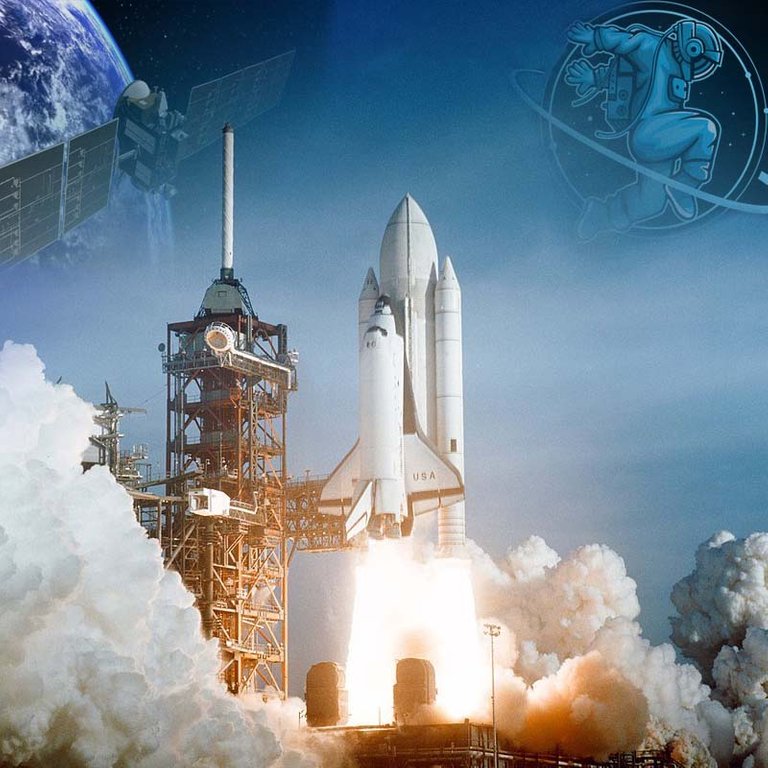
Una mirada al infinito universo: Historia de la investigación astronáutica, una manera de ver más allá de la atmósfera
¡Hola, hola, colmena! Continuamos con el cuarto capítulo de la serie Astronomía. En esta ocasión podremos evidenciar cómo la humanidad rompe la barrera atmosférica y se adentra más aún en el universo.
Antes de todo, podríamos por un momento pensar en la manera de llegar al espacio en tiempos antiguos. Imposible, ¿cierto? Y cuando niños muchos imaginaban con sus juguetes hacerlo realidad. Lo cierto es que con el avance tecnológico abrumador se ha logrado tal azaña desde hace un poco más de cinco décadas.
Sabemos que los observatorios terrestres tienen un defecto, esto es, que están precisamente en la Tierra, un planeta con una atmósfera de cuantioso grosor. La atmósfera dificulta notablemente las observaciones, tanto si se efectúan por medios ópticos como radiotelescópicos.
Sin embargo, este conflicto está desapareciendo. Porque aunque la Tierra sigue en su sitio y la atmósfera no la abandona, el ser humano ha aprendido ya a lanzar objetos al espacio, mantener comunicación con ellos y, así lo desea, recuperarlos y hacer que retornen a la superficie.
Históricamente hablando, el ruso konstantín Tsiolkovski (1857-1935) fue el primero en concebir teóricamente la posibilidad de abandonar la Tierra mediante un vehículo propulsado por un motor cohete. Precisó también la mezcla propulsante del hidrógeno y oxígeno líquido que se usó en algunos cohetes y avanzó también la idea del cohete de varias fases.
Algunos investigadores ensayaron prácticamente con cohetes en Estados Unidos y sobre todo en Alemania. Los alemanes lograron fabricar en serie grandes cohetes de guerra, diseños que permitiría el inicio a los trabajos de norteamericanos y soviéticos después de la guerra.
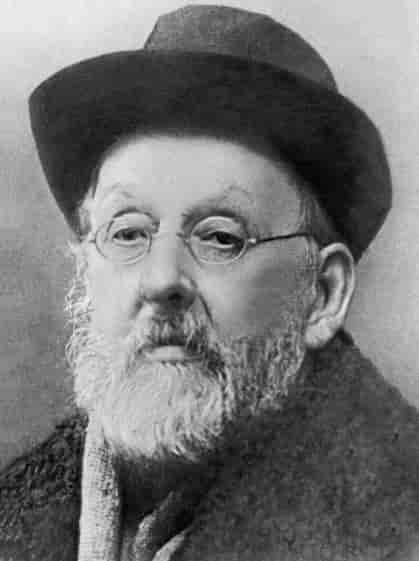
Konstantín Tsiolkovski científico ruso pionero en la formulación teórica sobre los cohetes.
Y es así como durante el año geofísico internacional se puso en órbita el primer satélite artificial de la historia. El 4 de octubre de 1957, lanzado por Rusia (en aquel entonces Unión Soviética), colocaron en órbita el Sputnik I. Poseía cuatro delgadas antenas y pesaba aproximadamente 80 kg.
En su primera expedición a la órbita de la Tierra, el Sputnik duró una hora y 38 minutos en llegar y el objetivo era obtener información sobre las capas de la atmósfera y el campo electromagnético de nuestro planeta.
El famoso bip-bip-bip emitido por el Sputnik I, que se escuchó por los altavoces de todos los radiosreceptores del mundo, señalaba el principio de la ingente cantidad de información astronómica y geográfica comunicada a la Tierra por las estaciones espaciales de funcionamiento automático lanzadas por nosotros más allá de la atmósfera terrestre.
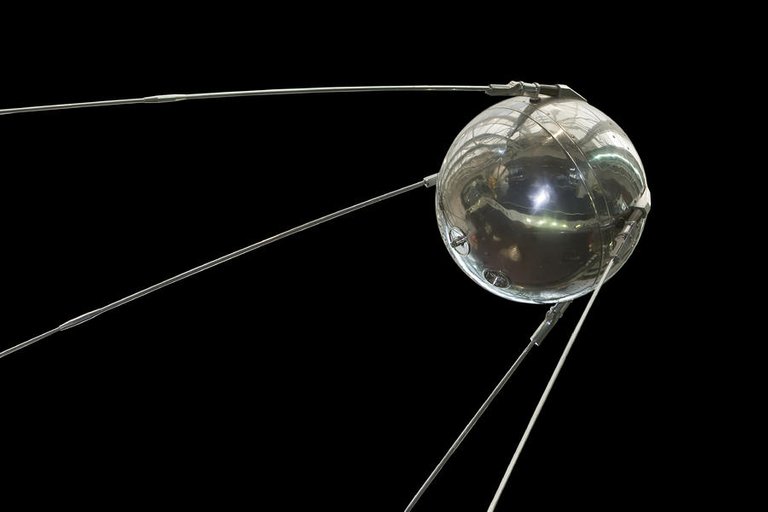
El Sputnik I, primer satélite artificial de la historia.
Su segunda versión fue bautizada Sputnik 2. Fue el primer satélite en llevar a un ser vivo al espacio exterior. Se trata de la perrita Laika, la cual tristemente falleció siete horas después por sobrecalentamiento de la cápsula.
Las sondas espaciales o satélites artificiales que se lanzan actualmente al espacio son de muy diversos tipos. En primer lugar, existen los satélites que se destinan a observar la propia Tierra. Giran en órbita terrestre y suministran informaciones meteorológicas y geofísicas diversas.
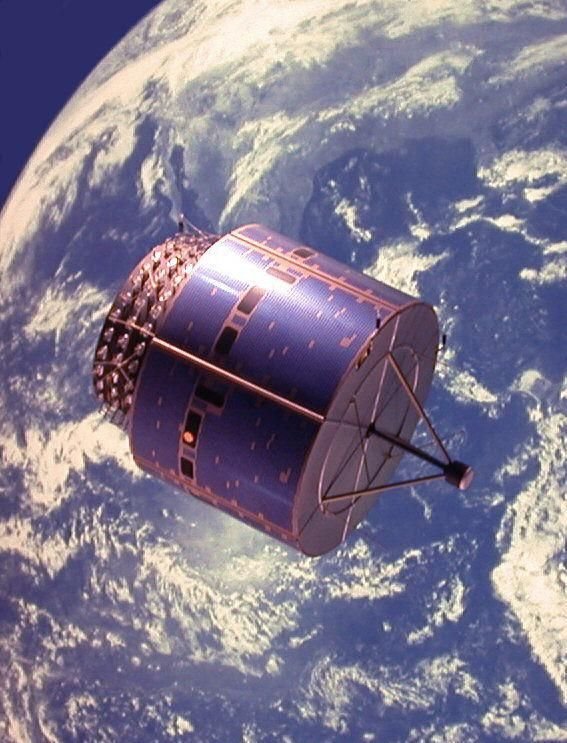
Satélite meteorológico.
Por otra parte, encontramos las sondas lunares que tienen por misión estudiar la Luna. Las primeras se lanzaron en 1958 y 1959. Llamada Luna 1 fue una sonda soviética no tripulada, la cual logró pasar la barrera de la atracción de la Tierra. Esta sonda logró obtener valiosa información, revelando que la Luna no tenía campo magnético. También recabó información sobre la existencia de viento solar.
Desde 1960 se suman técnicas más refinadas y actualmente las estaciones lunares se mantienen en una órbita lunar que se posa suavemente en la superficie.
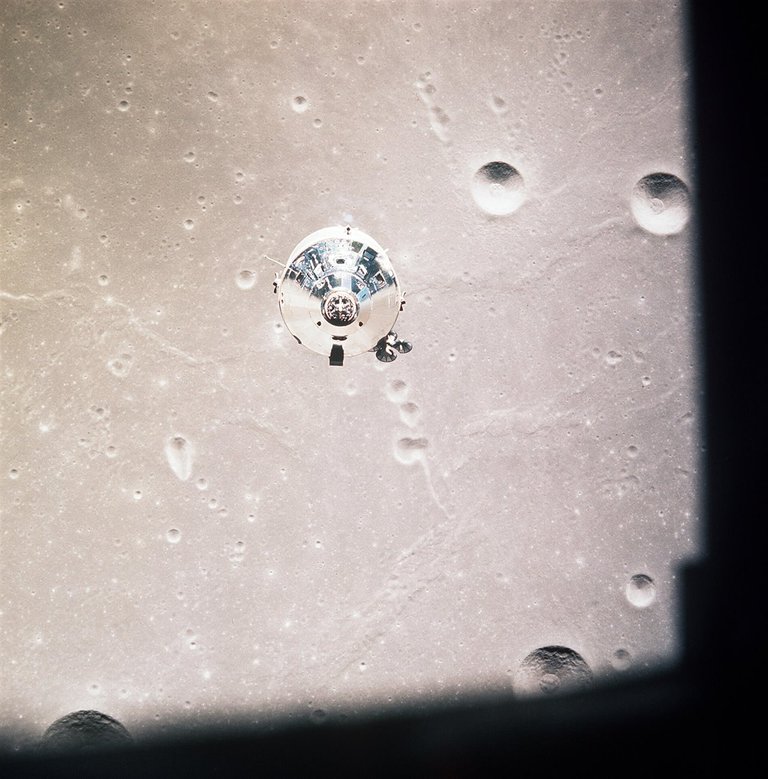
National Geographic nos muestra imágenes de la NASA donde se evidencia el estudio Lunar.
En tercer lugar, están las estaciones automáticas que se han lanzado al espacio exterior más allá de la Luna. Aquí hay que distinguir entre los observatorios espaciales en sentido amplio y las sondas para estudiar algún astro en particular, sea o no desde una posición orbital. Gracias a estas sondas se han obtenido datos muy importantes sobre el Sol y varios planetas del sistema solar, incluso de las galaxias más distantes.

Colección histórica de NASA, 23 de marzo de 1977. Ingenieros trabajando en la Sonda Voyager. Créditos: NASA/JPL-Caltech.
La Luna en la que la humanidad ha hecho acto de presencia desde el ya algo lejano 21 de julio de 1969. La misma sobre la cual Neil Armstrong posaba por primera vez sobre sus pies. La superficie lunar ofrece maravillosas posibilidades a los astrónomos, al punto de hablar ya seriamente del establecimiento de base lunares a partir de las cuales los seres humanos podrían explorar la Luna a bordo de vehículos, tales como se pude hacer con los rovers y los históricos Lunojod.
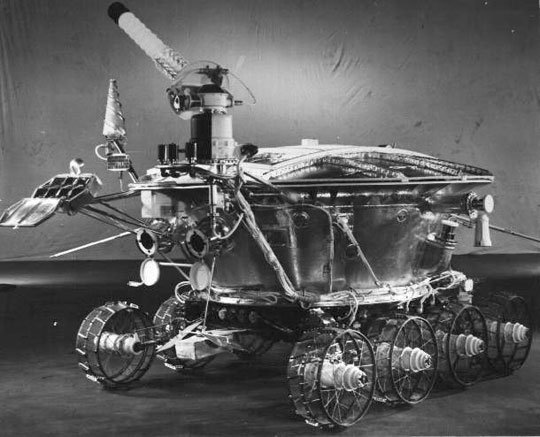
El 17 de noviembre de 1970, enviado por la extinta Unión Soviética, el Lunokhod 1 Rover llega a la superficie de la Luna. Créditos: NASA/GSFC/Arizona State University.
Para colocar humanos en el espacio se realizaron muchas pruebas para así ver el comportamiento en todo sentido de una persona. Todo ello porque estas se mantienen dando vueltas por el espacio sin gravedad, pudiendo afectar la salud física y el estado psicológico. Debido a resultados favorables en ese sentido, se ha consolidado la creación de estaciones espaciales permanentes como la ISS, un laboratorio donde científicos de todas las ramas desarrollan sus observaciones e investigaciones.

Estación Espacial Internacional (ISS). Cuesta creer que sus días ya están contados.
En colaboración mediantes tratados internacionales, en el proyecto participan agencias espaciales como la NASA (Estados Unidos), Roscosmos (Rusia), JAXA (Japon), ESA (Europa) y CSA/ASC (Canadá), las cuales lograron la creación de un laboratorio espacial con lanzamiento el 20 de noviembre de 1998. En él se han realizado estudios sobre Astronomía, Astrobiología, Física, Meteorología, entre muchos más campos de estudios. Indudablemente, es considerado uno de los logros más importante hecho por la humanidad y ya sabemos que tiene fecha de caducidad.
Con un espacio infinito y muchas preguntas por responder, la humanidad se adentra más a él mediante el uso de la tecnología. Quizás dentro de cientos de años, los humanos logren colonizar algún planeta. No lo sabremos, pero se vale soñar.
Me despido hasta una nueva entrega, mis hivernautas.
Fuentes de las imágenes: // Sources of the images:
Imagen 1: Autoría propia. Realizada con base en imágenes libres. // Own authorship. Made based on free images.
Imagen 2: Fuente
Imagen 3: Fuente
Imagen 4: Fuente
Imagen 5: Fuente
Imagen 6: Fuente
Imagen 7: Fuente
Imagen 8: Fuente
Imagen 9: Fuente
Imagen 10: Fuente
Fuentes de consulta: // Reference sources:
- https://www.nasa.gov/mission_pages/LRO/multimedia/lroimages/lroc-20100318.html
- https://principia.io/2016/09/19/konstantin-tsiolkovski-hasta-el-infinito-y-mas-alla.IjQyNiI/
- https://www.nationalgeographic.com.es/llegada-del-hombre-a-la-luna/carrera-espacial-paso-a-paso_14369
- https://misistemasolar.com/satelites-meteorologicos/
- https://spaceplace.nasa.gov/voyager-to-planets/sp/
- https://www.lanasa.net/iss
English version

A look at the infinite universe: History of astronautical research, a way of seeing beyond the atmosphere
Hello, hello, hive! We continue with the fourth chapter of the Astronomy series. On this occasion we will be able to show how humanity breaks the atmospheric barrier and goes even deeper into the universe.
First of all, we could for a moment think about the way to get to space in ancient times. Impossible, right? And when children many imagined with their toys to make it come true. The truth is that with the overwhelming technological advance, such a feat has been achieved for a little more than five decades.
We know that terrestrial observatories have a defect, that is, that they are precisely on Earth, a planet with a thick atmosphere. The atmosphere greatly hinders observations, whether they are made by optical or radiotelescopic means.
However, this conflict is disappearing. Because although the Earth remains in place and the atmosphere does not abandon it, human beings have already learned to launch objects into space, maintain communication with them and, if desired, retrieve them and return them to the surface.
Historically speaking, the Russian Konstantin Tsiolkovsky (1857-1935) was the first to theoretically conceive of the possibility of leaving Earth by means of a vehicle propelled by a rocket engine. He also specified the propellant mixture of hydrogen and liquid oxygen that was used in some rockets and also advanced the idea of the multistage rocket.
Some researchers practically tested rockets in the United States and especially in Germany. The Germans succeeded in mass-producing large war rockets, designs that would kickstart American and Soviet work after the war.

Konstantin Tsiolkovski Russian scientist pioneer in the theoretical formulation on rockets.
And this is how the first artificial satellite in history was put into orbit during the international geophysical year. On October 4, 1957, launched by Russia (then the Soviet Union), they placed Sputnik I into orbit. It had four thin antennae and weighed approximately 80 kg.
In its first expedition to Earth orbit, Sputnik took one hour and 38 minutes to arrive and the objective was to obtain information about the layers of the atmosphere and the electromagnetic field of our planet.
The famous beep-beep-beep emitted by Sputnik I, which was heard through the loudspeakers of all radio receivers in the world, marked the beginning of the enormous amount of astronomical and geographical information communicated to Earth by the self-operating space stations launched by us beyond the earth's atmosphere.

Sputnik I, the first artificial satellite in history
Its second version was baptized Sputnik 2. It was the first satellite to carry a living being into outer space. This is the dog Laika, who sadly died seven hours later due to overheating of the capsule.
The space probes or artificial satellites that are currently launched into space are of many different types. First of all, there are satellites that are intended to observe the Earth itself. They rotate in Earth orbit and provide diverse meteorological and geophysical information.

Weather satellite
On the other hand, we find the lunar probes whose mission is to study the Moon. The first ones were launched in 1958 and 1959. Called Luna 1 it was an unmanned Soviet probe, which managed to pass the barrier of Earth's attraction. This probe managed to obtain valuable information, revealing that the Moon had no magnetic field. He also collected information on the existence of solar wind.
Since 1960, more refined techniques have been added and currently the lunar stations are maintained in a lunar orbit that gently settles on the surface.

National Geographic shows us NASA images where the Lunar study is evidenced
Third, there are the automatic stations that have been launched into outer space beyond the Moon. Here we must distinguish between space observatories in a broad sense and probes to study a particular star, whether or not from an orbital position. Thanks to these probes, very important data on the Sun and various planets in the solar system, including the most distant galaxies, have been obtained.

NASA Historical Collection, March 23, 1977. Engineers working on the Voyager probe. Credits:NASA/JPL-Caltech
The Moon in which humanity has made an appearance since the already somewhat distant July 21, 1969. The same one on which Neil Armstrong posed for the first time on his feet. The lunar surface offers marvelous possibilities to astronomers, to the point of seriously talking about the establishment of lunar bases from which human beings could explore the Moon aboard vehicles, as could be done with rovers and historical vehicles Lunochod.

On November 17, 1970, sent by the extinct Soviet Union, the Lunokhod 1 Rover reaches the surface of the Moon. Credits: NASA/GSFC/Arizona State University.
To place humans in space, many tests were carried out in order to see the behavior of a person in all senses. All this because they keep circling space without gravity, and can affect physical health and psychological state. Due to favorable results in this regard, the creation of permanent space stations such as the ISS has been consolidated, a laboratory where scientists from all branches carry out their observations and research.

International Space Station (ISS). It's hard to believe that his days are already numbered.
In collaboration through international treaties, space agencies such as NASA (United States), Roscosmos (Russia), JAXA (Japan), ESA (Europe) and CSA/ASC (Canada) participate in the project, which achieved the creation of a space laboratory launched on November 20, 1998. Studies have been carried out on Astronomy, Astrobiology, Physics, Meteorology, among many more fields of study. Undoubtedly, it is considered one of the most important achievements made by humanity and we already know that it has an expiration date.
With an infinite space and many questions to be answered, humanity is moving further into it through the use of technology. Perhaps hundreds of years from now, humans will be able to colonize some planet. We will not know, but it is worth dreaming.
I say goodbye until a new installment, my hivernauts.
Fuentes de las imágenes: // Sources of the images:
Imagen 1: Autoría propia. Realizada con base en imágenes libres. // Own authorship. Made based on free images.
Imagen 2: Fuente
Imagen 3: Fuente
Imagen 4: Fuente
Imagen 5: Fuente
Imagen 6: Fuente
Imagen 7: Fuente
Imagen 8: Fuente
Imagen 9: Fuente
Imagen 10: Fuente
Fuentes de consulta: // Reference sources:
- https://www.nasa.gov/mission_pages/LRO/multimedia/lroimages/lroc-20100318.html
- https://principia.io/2016/09/19/konstantin-tsiolkovski-hasta-el-infinito-y-mas-alla.IjQyNiI/
- https://www.nationalgeographic.com.es/llegada-del-hombre-a-la-luna/carrera-espacial-paso-a-paso_14369
- https://misistemasolar.com/satelites-meteorologicos/
- https://spaceplace.nasa.gov/voyager-to-planets/sp/
- https://www.lanasa.net/iss
Thanks for your contribution to the STEMsocial community. Feel free to join us on discord to get to know the rest of us!
Please consider delegating to the @stemsocial account (85% of the curation rewards are returned).
You may also include @stemsocial as a beneficiary of the rewards of this post to get a stronger support.
Muchas gracias!! 👍
Congratulations @jrevilla! You have completed the following achievement on the Hive blockchain And have been rewarded with New badge(s)
Your next target is to reach 4500 upvotes.
You can view your badges on your board and compare yourself to others in the Ranking
If you no longer want to receive notifications, reply to this comment with the word
STOPCheck out our last posts:
Support the HiveBuzz project. Vote for our proposal!
¡Felicitaciones!
Estás participando para optar a la mención especial que se efectuará el domingo 12 de febrero del 2023 a las 8:00 pm (hora de Venezuela), gracias a la cual el autor del artículo seleccionado recibirá la cantidad de 1 HIVE transferida a su cuenta.
¡También has recibido 1 ENTROKEN! El token del PROYECTO ENTROPÍA impulsado por la plataforma Steem-Engine.
1. Invierte en el PROYECTO ENTROPÍA y recibe ganancias semanalmente. Entra aquí para más información.
2. Contáctanos en Discord: https://discord.gg/hkCjFeb
3. Suscríbete a nuestra COMUNIDAD y apoya al trail de @Entropia y así podrás ganar recompensas de curación de forma automática. Entra aquí para más información sobre nuestro trail.
4. Visita nuestro canal de Youtube.
Atentamente
El equipo de curación del PROYECTO ENTROPÍA
¡Enhorabuena!
✅ Has hecho un buen trabajo, por lo cual tu publicación ha sido valorada y ha recibido el apoyo de parte de CHESS BROTHERS ♔ 💪
♟ Te invitamos a usar nuestra etiqueta #chessbrothers y a que aprendas más sobre nosotros.
♟♟ También puedes contactarnos en nuestro servidor de Discord y promocionar allí tus publicaciones.
♟♟♟ Considera unirte a nuestro trail de curación para que trabajemos en equipo y recibas recompensas automáticamente.
♞♟ Echa un vistazo a nuestra cuenta @chessbrotherspro para que te informes sobre el proceso de curación llevado a diario por nuestro equipo.
🥇 Si quieres obtener ganancias con tu delegacion de HP y apoyar a nuestro proyecto, te invitamos a unirte al plan Master Investor. Aquí puedes aprender cómo hacerlo.
Cordialmente
El equipo de CHESS BROTHERS
@tipu curate 6
Upvoted 👌 (Mana: 0/52) Liquid rewards.
Muchas gracias por el apoyo 👍
Interesting
!1UP
You have received a 1UP from @gwajnberg!
@stem-curator, @vyb-curator, @pob-curator, @neoxag-curator
And they will bring !PIZZA 🍕.
Learn more about our delegation service to earn daily rewards. Join the Cartel on Discord.
Muchas gracias!! ☺️
I gifted $PIZZA slices here:
@curation-cartel(8/20) tipped @jrevilla (x1)
Please vote for pizza.witness!